
Welcome to the exciting world of the Japanese abacus!
Excited to learn how to use the abacus? Before we jump into the practical lessons, let’s lay a strong foundation by understanding the basics of the abacus.
Ever wondered where the ones, tens, and hundreds are on the abacus? How do we read the abacus? Don’t worry! Even though the beads might all look the same, once we learn more, it’ll make sense.
we’ll explore the essential components of the abacus. You’ll learn about the correct hand position, posture, and how to reset the abacus for your calculations.
In this lesson, we’ll cover the important parts of the abacus. You’ll learn how to hold your abacus, the best way to sit, and how to clear the abacus for your next calculation.
Get your abacus ready and let’s dive in!

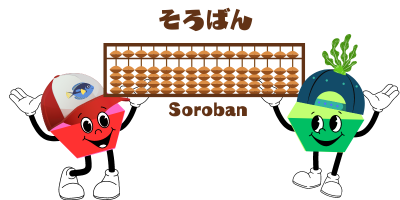
What is an abacus ?
In the world, there are various kinds of abacuses. We use the “Soroban,” which is the Japanese abacus. It’s been a part of Japanese culture since the 17th century.
Despite the prevalence of computers and digital calculators, Japanese children still learn the abacus in elementary school. It’s also one of the most popular extracurricular activities in Japan.
Parents encourage their children to learn the abacus not just to enhance their math abilities, but also to strengthen their confidence and concentration.
The Parts Of Abacus (Japanese "Soroban")
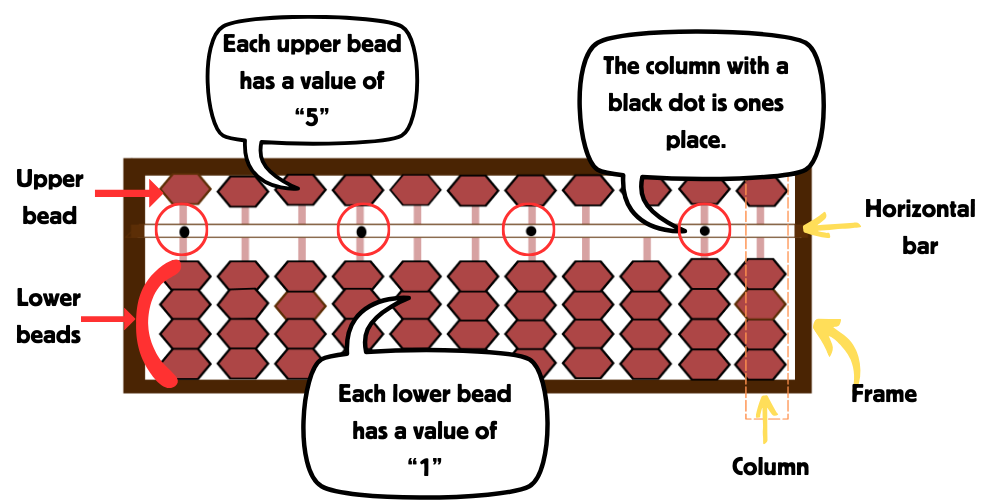
Horizontal Bar (Divider)
The horizontal bar serves as a separator between the upper and lower beads. It aids in visually distinguishing between the place values.
- Column
A vertical arrangement of beads, including both upper and lower beads, represents a specific place value. Frame
The frame holds the columns of beads together, providing a stable structure for the abacus.- Dot
The column with a dot represents ones, the next column to the left represents tens, the next hundreds, and so on.

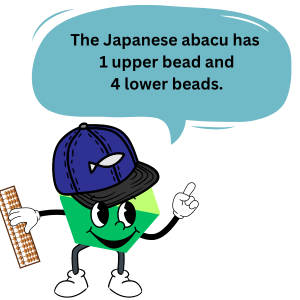
Beads
The abacus has columns of beads arranged horizontally. Each column contains four beads below the horizontal bar and one bead above it. The beads represent different place values: units (ones), tens, hundreds, thousands, and so on.
Upper Beads
The one bead positioned above the horizontal bar represent a value of 5 each. They contribute to counting in multiples of 5.
Lower Beads
The four beads below the horizontal bar each represent a value of 1. These beads contribute to counting in ones.

Getting Yourself Ready : Good Posture
Sit Comfortably:
Choose a chair that allows you to sit comfortably with your back straight.Table Height:
The table should be at a level that allows your arms to rest comfortably while manipulating the abacus beads.Abacus Placement:
Place the abacus on the table directly in front of you. The bottom edge of the abacus frame should be parallel to the edge of the table.Distance:
Ensure that the abacus is positioned at a comfortable distance from your body. You should be able to reach the beads easily without straining.

Hand Position

- Right-Handed:
If you’re right-handed, hold the pencil with your right hand using your middle, ring, and pinky fingers, while keeping your thumb and pointer finger free. Then, use your left hand to gently support the left edge of the abacus. This way, you can work comfortably and easily!
- Left-Handed:
If you’re left-handed, hold the pencil comfortably with your left hand, while gently supporting the left edge of the abacus. Use your right hand to manipulate the beads, just like a right-handed person. Your dominant hand, which holds the pencil and writes the answer, will be your left hand, while the hand that manipulates the beads is always the right hand.
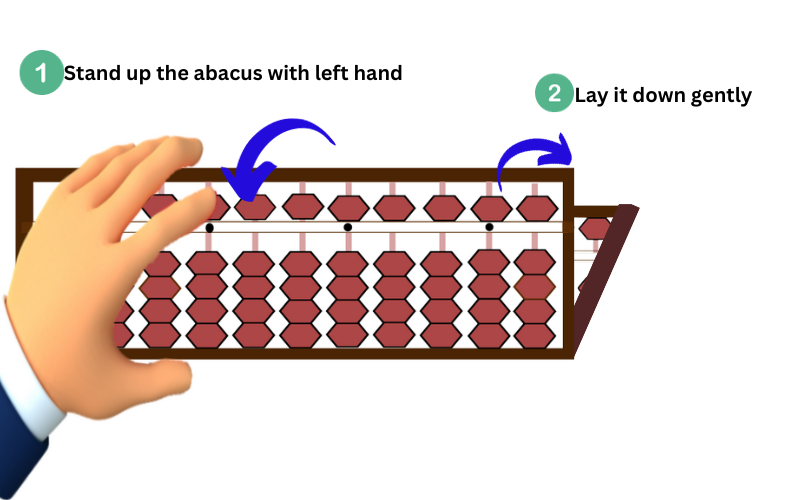
Resetting Abacus
Just like you push AC (All Clear) button on the calculator to begin a new calculation, you need to clearing the beads each time you are ready to begin.
Hold the abacus with left hand and stand it up towards yourself. Notice that all the beads go down. Then, gently put it back.
Using your pointer, gently swipe or push the beads to the right, away from the horizontal bar.
This motion will clear the 5 beads from the column.
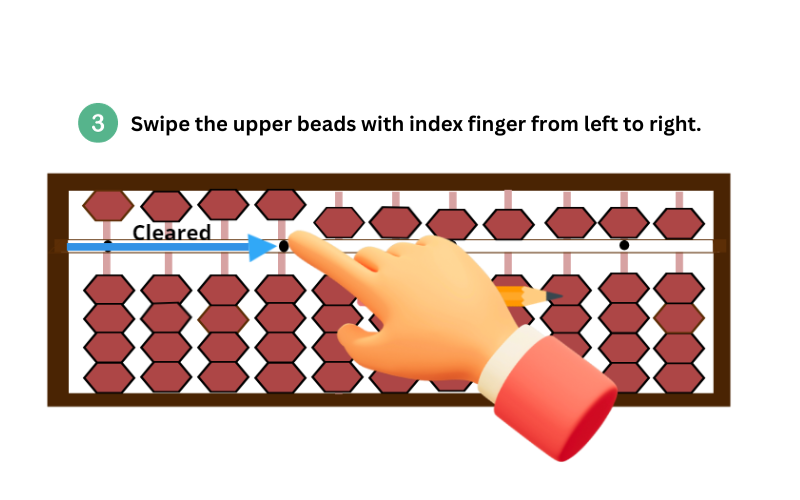

Abacus Basics Lesson Video
In this video, we cover all the basics you need to know before diving into using the abacus. We’ll explain what the abacus is, how it works, the different types of abacus, and the importance of good posture while using it. We’ll also show you the right way to hold your abacus and introduce the concept of place value. Plus, we’ll teach you how to reset the abacus for each new calculation.
By the end, you’ll be all set to start your abacus journey with confidence!


In this lesson, we’ve learned the basics of Japanese abacus. We learned the parts of abacus and how to hold it with hands. We’ve also learned how to clear all the beads and reset for a new calculation.
Get your abacus ready and let’s dive in! While we’ll explore manipulating beads in the upcoming lessons, take a moment to familiarize yourself with the abacus. It’s a hands-on journey, so let’s play and learn together!”

